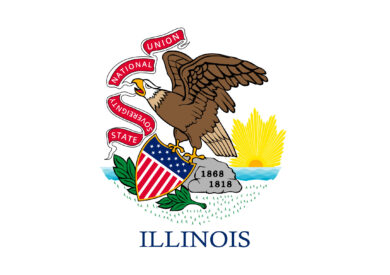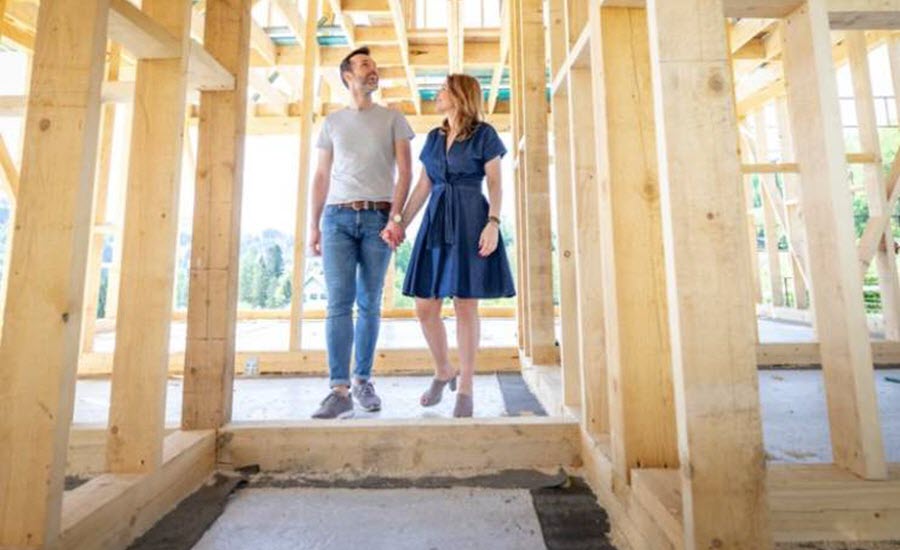
 Popular Cities For Lending in Illinois
Popular Cities For Lending in Illinois
Cicero
Elgin
Evanston
Joliet
Naperville
Peoria
Rockford
Schaumburg
Springfield
Waukegan
In the Illinois real estate market, grabbing properties before your competition is essential for making the best deals. Although real estate investors sometimes go the traditional route and seek bank loans, the process is anything but speedy.
When time is of the essence, waiting for the lengthy process of getting approval is not an option for most investors. Illinois hard money lenders specialize in providing hard money loans which provide quick funds to investors. These loans are for a non owner occupied property or in some cases for business purpose loans.
Illinois Hard Money Lender FAQ’S
Below are some of the most frequently asked questions we get regarding hard money loans and lenders in Illinois.
What Do Illinois Hard Money Lenders Specialize in?
Illinois hard money lenders specialize in providing short-term, creative financing for real estate investors. If you seek a conventional lender to purchase an investment property, your loan request will be based on the property’s value and your assets. Your credit score, job, and finances will be scrutinized intensely. Hard money lenders base their final loan decisions on the after-repair value. The ARV represents the potential value of a property after all repairs have been accomplished.
What are the Benefits of Illinois Hard Money Loans?
Illinois hard money loans offer advantages that traditional banks cannot. Lenders like Acamnet Financial offer a higher level of flexibility than banks. When qualifying for this type of loan, lenders do not delve too deeply into the finances of real estate investors. In most cases, simply present the property and your plans, which saves you the hassle of gathering countless financial documents.
Do Illinois Hard Money Lenders Look at my Credit Score?
One of the greatest benefits of working with Illinois hard money lenders is the lack of credit score requirements. One of the first things a bank does is check your credit score. You can get approved for a hard money loan in Illinois even if you have bad credit or poor credit, bankruptcies, and foreclosures in the past. Illinois Hard money lenders primarily care about the property you are purchasing.
What is the Interest Rate & Points for Hard Money Loans in Illinois?
Interest rates for hard money loans in Illinois are typically higher than traditional bank loans (conventional loans) because of the greater risk lenders must take on when approving loans. When searching for a hard money lender near me in Illinois, you will find average interest rate is between 8%-15%. You should also be aware that lenders sometimes charge points that are meant to offset their administrative costs. Each point represents 1% of the total loan amount. The average points lenders charge is between 1 to 3. Some lenders may charge up to 10 points. These points are due upfront or at closing, depending on the lender.
What Should I Look for in an Illinois Hard Money Lender?
There are many benefits to working with an Illinois hard money lender. You just need to make sure you are working with the right lender. You can rely on Acamnet Financial Group when you need us most. We offer reliability, consistency, experience, and support. As a real estate investor, you know the importance of grabbing the best property deals when they become available.
How can Hard Money Lenders in Illinois Help Me?
Whether you are new to real estate and real estate projects or an old pro, you know having the capital to purchase real estate is essential. Without funds, you will miss out on real estate transactions. When you partner with hard money lenders in Illinois, you will quickly get the money you need without jumping through the hoops of traditional bank lenders.
How do I get a Hard Money Loan in Illinois?
When you want a hard money loan in Illinois, begin by preparing the property information. Location, size, purchase price, after repair value, repair costs, etc. In most cases, the financing will be based on these numbers. Then, apply for a hard money loan in Illinois using this information and supply some financial information. Then, an appraisal will be ordered to assess the loan-to-value ratio, which will influence the loan amount.
How do I Refinance an Illinois Hard Money Loan?
Refinance a Illinois hard money loan will involve moving from a high interest, short term loan to a longer term, usually lower interest rate loan. Typically a conventional type of loan. When refinancing an Illinois hard money loan you will find it will have a more stringent set of guidelines. You will need to have sufficient credit and income qualifications. As the lending landscaping and regulations constantly change, you want to consult a knowledgeable conventional loan expert.

Current Real Estate Trends In Illinois (2024)
The real estate market in Illinois is ever-changing due to a variety of factors that affect housing trends. This article provides an objective and data-driven analysis of the current real estate trends in Illinois.
To gain a comprehensive understanding of the state’s real estate landscape, the housing market performance, affordability of homes, and other factors affecting the market will be examined.
Key indicators such as housing prices, sales volume, and inventory levels will be looked at, providing an evaluation of the market’s overall health and stability.
Additionally, the article will explore the affordability of homes by analyzing the median income-to-price ratio and the availability of affordable housing options.
Housing Market Performance
Illinois’ housing market is currently being evaluated for its overall stability and potential for growth. Recent data points to the market’s resilience despite the COVID-19 pandemic’s difficulties.
Home sales have climbed 4% compared to the year prior, with a median sales price of $220,000. Average days on the market have also dropped 8%, signifying a tight market.
It appears the market has held up well in the face of the pandemic’s tribulations.
Affordability of Homes
Home affordability in Illinois remains a major issue for those attempting to purchase a home. Despite the median home price in the state being $200,000, the median household income is only $63,575. This makes the cost of a home more than three times the average salary, creating a large gap between what people can afford and what is available.
The high cost of homeownership has made it difficult for many individuals and families to become homeowners. With the cost of a home being so much higher than the average salary, it can be nearly impossible to save enough for a down payment.
This is not only a problem in Illinois, but across the United States. As home prices continue to rise, so does the difficulty in affording one. This can be devastating for those who are unable to purchase a home and are unable to save for retirement or other important financial goals.
The issue of home affordability needs to be addressed immediately. Without solutions, more and more families will struggle to become homeowners and will be unable to achieve their financial goals. With the right strategies in place, this could be a major step forward in improving the housing market in Illinois and across the country.
Factors Affecting the Market
The Illinois housing market is affected by several factors.
Supply and demand, interest rates, and economic conditions all have an impact on the real estate trends.
Low inventory and high demand make competition fierce and lead to higher prices.
Lower interest rates encourage buyers, resulting in increased market activity. Conversely, higher interest rates can make it difficult for buyers to purchase a home.
It is also important to consider the economic conditions of the state, as this can influence the demand for housing.
Sources
https://realadvisor.com/housing-market-illinois/
https://patch.com/illinois/across-il/illinois-housing-markets-holding-better-most-report-shows
https://www.houzeo.com/blog/illinois-real-estate-market/

All About Illinois
Located in the Midwestern United States, Illinois is characterized by its diverse geography and vibrant economy. Bordered by the Great Lakes and the Mississippi River, Illinois spans 390 miles in length and 210 miles in width.
With a population of over 12 million people and a median household income of $65,030, the state is home to many residents. Illinois is widely renowned for its global city and transportation hub, Chicago, which contributes to its strong economic standing.
Additionally, the rich cultural history of Illinois is exemplified through its famous jazz and blues cultures in Chicago and the presence of prestigious universities. Moreover, the state boasts several notable historical landmarks, including two World Heritage Sites and the birthplaces or homes of three U.S. presidents.
Illinois offers a compelling mix of natural attractions, cultural resources, and historical sites, making it a popular destination for tourists.
Geography and Borders
Illinois, located in the Midwestern United States, is characterized by its geographic features. The Great Lakes border the state to the northeast and the Mississippi River to the west. Spanning a length of 390 miles and a width of 210 miles, Illinois has a diverse landscape that includes plains, hills, and forests.
The highest elevation in the state is 1,235 feet at Charles Mound, while the lowest height is 280 feet at the confluence of the Mississippi River and Ohio River.
This unique geography gives Illinois access to the Atlantic Ocean and the Gulf of Mexico, making it a vital transportation hub.
From its geographical layout, we explore the state’s population and economy.
Population and Economy
With a population density of 232/sqmi, the state ranks 6th in the United States in terms of population, indicating a significant concentration of residents. Illinois has a population of 12,812,508, making it one of the most populous states in the country.
The city of Chicago, a major global city and financial center, anchors the state’s diverse economy. Chicago’s industries include finance, manufacturing, technology, and transportation. Additionally, Illinois has a robust agricultural sector, producing corn, soybeans, and livestock.
The state’s transportation infrastructure, including its access to the Great Lakes and the Gulf of Mexico, further supports its economy.
As we transition to the next section on ‘language and time zone,’ it is essential to note that Illinois’s population diversity is reflected in the languages its residents speak.
Language and Time Zone
The state’s linguistic diversity is reflected in its residents’ various languages. While English is the official language of Illinois, it is not the only language spoken in the state. According to the latest data, 80.8% of the population speaks English, 14.9% speaks Spanish, and the remaining 5.1% speaks other languages.
This diversity in language adds to the cultural richness of Illinois and enhances the state’s multicultural identity.
Moving on to the next section about landmarks and culture, Illinois is not only known for its linguistic diversity but also its rich cultural history and iconic landmarks.
Landmarks and Culture
Landmarks and cultural sites in Illinois showcase its rich history and diverse cultural heritage. One of the notable landmarks is the Abraham Lincoln Presidential Library and Museum in Springfield, which provides insights into the life and presidency of the 16th U.S. President.
Another significant cultural site is the future Barack Obama Presidential Center, located in Chicago, which will honor the 44th U.S. President.
Illinois is also home to two World Heritage Sites: the Cahokia Mounds, which were the remnants of a major urban center of the Pre-Columbian Mississippian culture, and part of the Wright architecture site, showcasing the works of renowned architect Frank Lloyd Wright.
These landmarks and cultural sites offer visitors a glimpse into Illinois’ past and its contributions to American history.
We will now move into the next section before indigenous civilizations shaped European exploration and settlement, Illinois’ early history.
History – Pre-European
Pre-European history in Illinois is characterized by the presence of indigenous civilizations that inhabited the region for thousands of years. One notable civilization was the Cahokia, a Pre-Columbian Mississippian culture that thrived in the area. Cahokia was a major urban center with platform and burial mounds, a large plaza, and a woodhenge.
The most prominent structure in Cahokia was the Monks Mound, the largest Pre-Columbian structure north of Mexico. However, by the 15th century, civilization disappeared, possibly due to resource depletion and warfare.
The indigenous civilizations of Illinois left behind significant archaeological sites and artifacts that provide insights into their way of life. These ancient cultures laid the foundation for the European exploration and settlement that would follow in the coming centuries.


 Popular Cities For Lending in Illinois
Popular Cities For Lending in Illinois